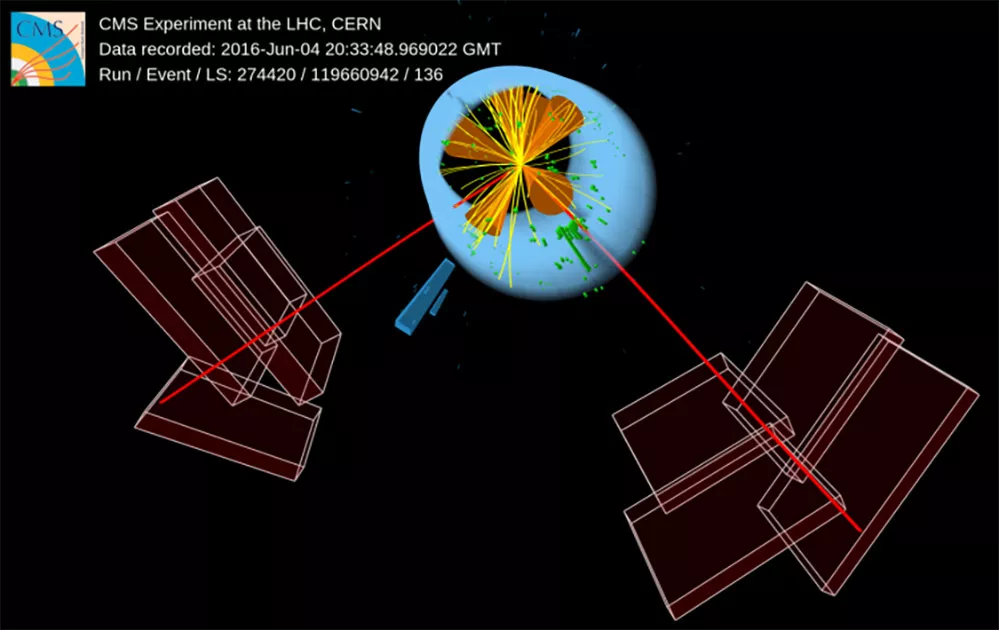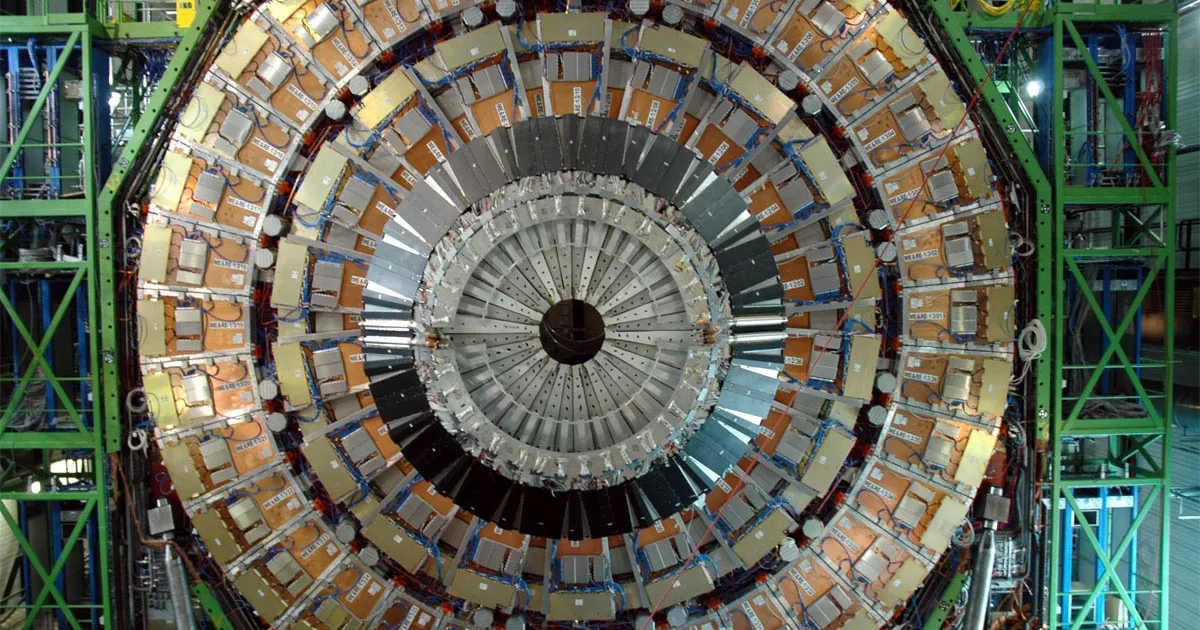A new and interesting result were announced in connection with the ATLAS and CMS experiments at CERN's Large Hadron Collider (LHC) at the 40th International Conference of Particle Physics held from 28 July to 6 August this year: there is a clear indication that the Higgs boson can decompose into two muons. The muon is a heavier counterpart to the electron, an elementary particle, one of the components that make up the matter of the Universe. While electrons are classified as the first generation of particles, muons belong to the second generation. The physical process in which the Higgs boson decomposes into muons is very rare: only one Higgs boson decay out of five thousand results in muons. This new result is crucial to basic research as it is the first to show that the Higgs boson interacts with the second generation of elementary particles, and thus they also gain their mass from it.
Since their discovery in 2012, physicists have been studying the properties of the extremely unique Higgs boson at CERN. The Higgs boson is created in proton-proton collisions and then almost immediately disintegrates into other particles, a process known as decay. One of the main methods of studying the Higgs boson is to investigate the possibilities and frequency of decomposition into different particles.
The CMS experiment showed significant (“3 sigma”) evidence for decay. This means that the chances that the Higgs boson's decay into a pair of muons observed now is only a statistical fluctuation, occuring in less than 1 case out of 700. ATLAS’s “2 sigma” result is weaker, with odds of an error occuring in 1 out of 40 cases. The combination of the two results provides strong evidence for the muonic decomposition of the Higgs boson.
The CMS detector
“We are proud to have been able to observe the muonic decay of the Higgs boson with such sensitivity in the CMS detector, and to present the first experimental evidence for the process. The Higgs boson also appears to interact with second-generation particles, consistent with the prediction of the standard model. We will further refine the result with the data we will collect in the next measurement period,” says Roberto Carlin, head of the CMS experiment.

The Higgs boson is the quantum appearance of a field with a similar name that gives mass to the elementary particles that interact with it via the Brout – Englert – Higgs mechanism. By measuring the decomposition of the Higgs boson into various particles, physicists can infer the strength of their interaction with the field: the higher the frequency of a decay, the stronger the interaction. The ATLAS and CMS experiments have so far observed decay into W and Z bosons and heavier, third-generation fermions (e.g. tau-lepton). The interaction with heavy quarks (b quarks and t quarks) was measured in 2018. Muons are much lighter, making their interaction with the Higgs field weaker, so traces of the interaction between the Higgs boson and the muons have only been detected in the LHC.
Particularly challenging in the measurements is that for each Higgs boson decay into muons in the LHC, there are thousands of muon pairs generated by other processes but leaving very similar signals in the detectors. One of the characteristics of the desired decay events is that the mass of the muon pairs is around 125 GeV, which is the mass of the Higgs boson. Measurement is not easy: the energy, momentum and flight angle of muons must be measured. The sensitivity of the evaluation was improved by several techniques, such as sophisticated background modeling and the use of machine learning algorithms. The CMS experiment combined four separate analyses, each optimized to detect specific signs of decay.
The results, which have so far been consistent with the standard model's prediction, are based on processing the total amount of data provided by the LHC so far. Using data to be recorded by the particle accelerator in the coming years and in the high-intensity “High Luminosity LHC” phase, the ATLAS and the CMS experiments will also achieve the (“5 sigma”) sensitivity required for detecting decay into two muons and will be able to constrain theories beyond the standard model.
In Hungary, close to forty researchers and students of the MTA-ELTE CMS Particle and Nuclear Physics Momentum Research Group at ELKH, Eötvös Loránd University, the Wigner Research Centre for Physics, the Nuclear Research Institute in Debrecen and the University of Debrecen participate in the CMS partnership. Researchers at the Wigner Centre played an important role in the operation and development of CMS's internal silicon tracking detectors, while collaborators in Debrecen worked on a positioning system for external detectors for muons. Both detectors are essential for the detection of muons. The MTA – ELTE group was involved in measuring the efficiency of triggers that select events in real time and the luminosity that determines the exact amount of data.
Source: CERN, CMS experiment
Additional materials and information:
CMS
Physics analysis summary: https://cds.cern.ch/record/2725423/files/HIG-19-006-pas.pdf
Physics briefing: https://cmsexperiment.web.cern.ch/news/cms-sees-evidence-higgs-boson-decaying-muons
Physics event displays: https://cds.cern.ch/record/2720665?ln=en
Physics plots: http://cds.cern.ch/record/2725728
ATLAS
ATLAS paper on arXiv: https://arxiv.org/abs/2007.07830
ATLAS Physics briefing: https://atlas.cern/updates/physics-briefing/new-search-rare-higgs-decays-muons
Event Display: https://cds.cern.ch/record/2725717?ln=en
Scientific Plots and Diagrams: https://atlas.web.cern.ch/Atlas/GROUPS/PHYSICS/PAPERS/HIGG-2019-14

